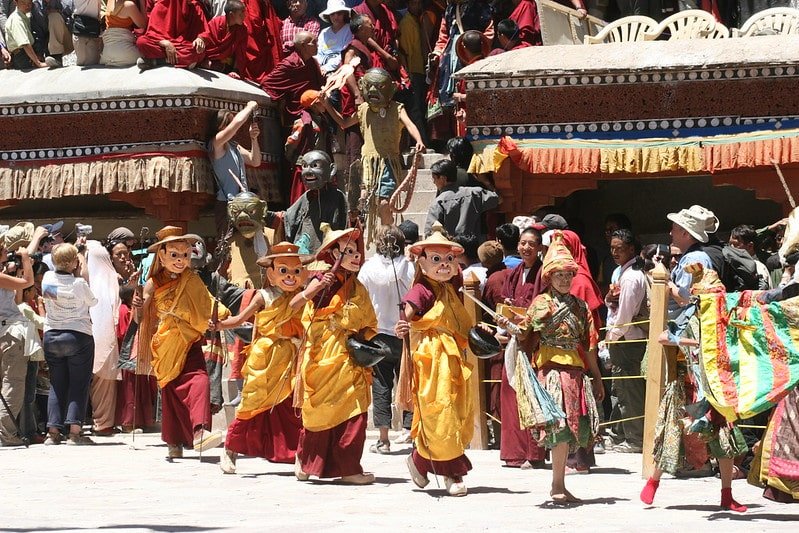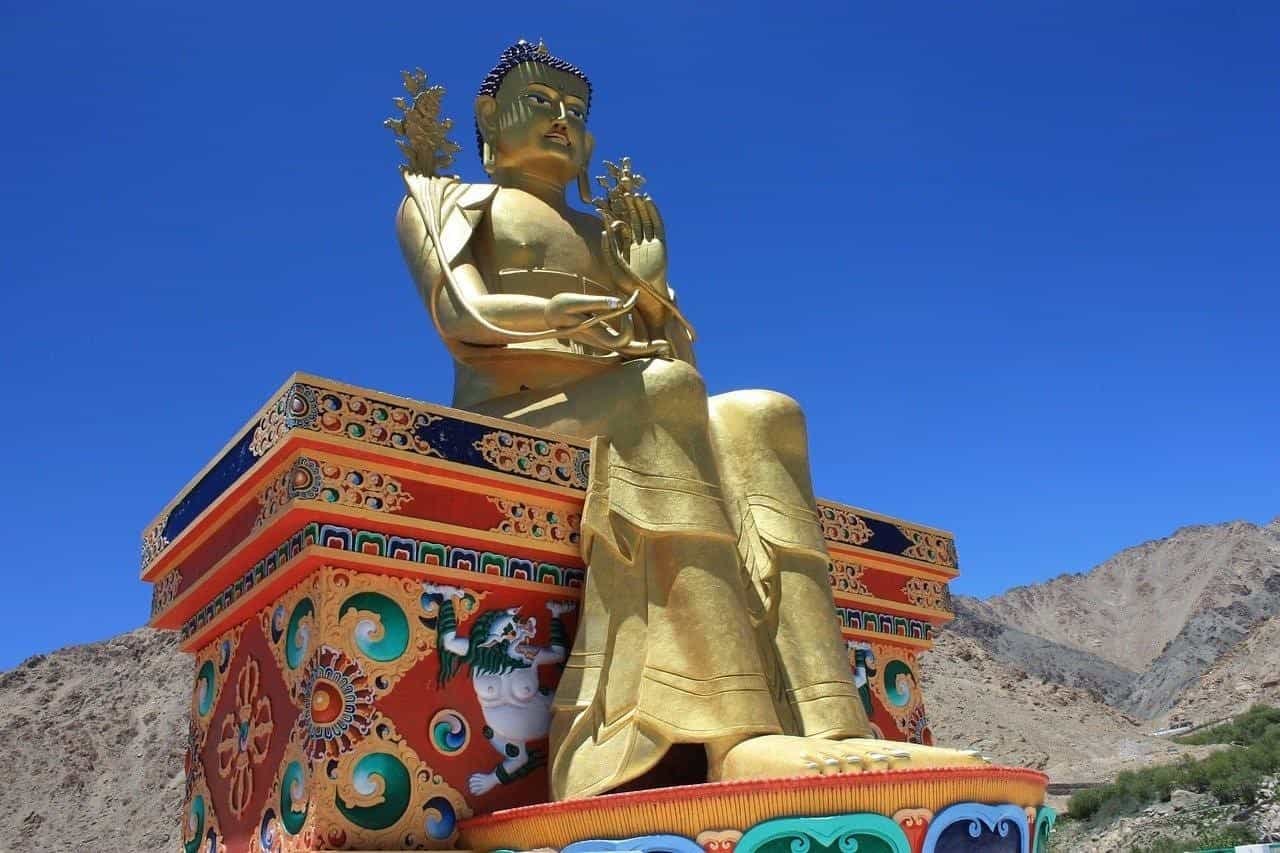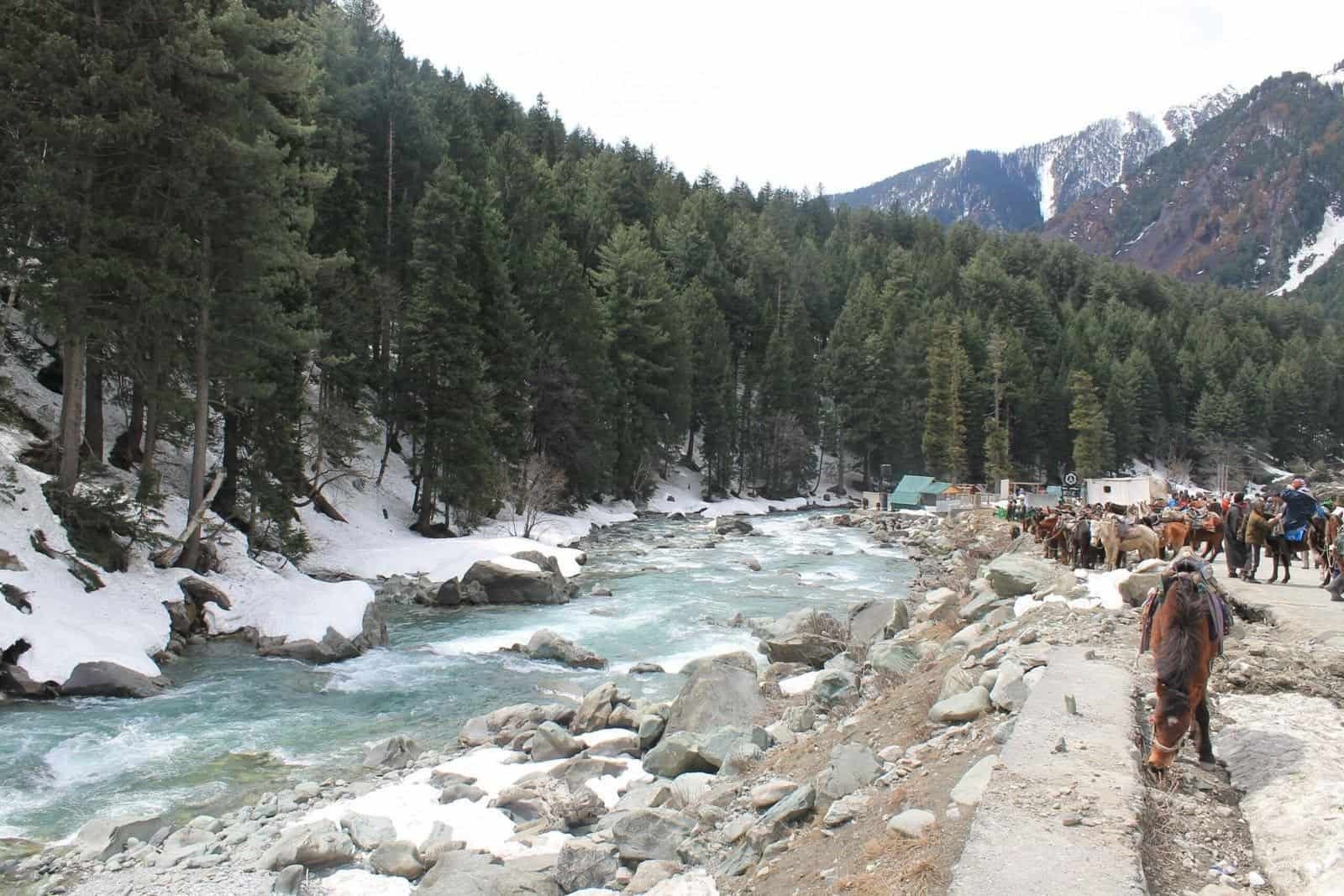Hemis Festival
Overview
The Hemis festival Ladakh is very famous which is celebrated every year on the tenth day of the Tse-Chu that falls during the Lunar month according to the Lunar Calendar. It is an event which is held for 2 days to celebrate the birth anniversary of Guru Padmasambhava.
The vibrant event highlights the region’s finest handicrafts. Native people gather in the courtyard of Hemis Monastery, dressed in beautiful costumes. It is said to be one of the largest monasteries of Ladakh. People enjoy and dance around to the sounds of drums, longhorns, lamas which are the main attraction of the festival.
Hemis Festival is enjoyed both by the locals as well as by the tourists where both the dry and cold desert seems to come to life. On both celebration days, the Buddhist paintings are on display. We refer to these artworks as thangkas.
The annual display of a massive thangka during the celebration of the Ladakh Hemis festival is one of the festival’s main features. On the first day of the celebration, it is typically carried out.
Popular Ladakh Tours
7D/6N
8D/7N
6D/ 5N
10D/9N
Highlights of Hemis Festival
“Chham Dance” is another name for the masked dance in Hemis festival Ladakh. It shows the victory of good over evil, which is the focal point of the Hemis Ladakh Festival. In order to keep the audience entertained throughout the event, people often perform sacred plays. The Lamas dress in colorful clothes, while the monks don their customary long gowns. The actors also don ornate headdresses and masks. Each mask has a certain meaning attached to it.
Ultimately, the head of the Black Hat dancers destroys a dough sculpture that symbolizes the evil powers. This means keeping the bad spirits at bay. After that, the fragments are flung in four distinct directions. The ceremony signifies the soul’s purification following death.
Another essential component of the festivity is the Devil Dances. People are served “Chang,” a local liquor, during the celebration. The display of eye-catching handicrafts enhances the gala’s allure. The occasion is presided over by the head Lama, also known as the “Rinpoche.”
The fun factor is increased during the Tibetan Year of Monkey, which occurs every 12 years. Ladakh is engulfed in a powerful surge of spiritualism and faith when Guru Padmasambhava’s largest thangka which can reach two stories of a building is joyfully shown. A variety of individuals gather to see the thangka adorned with pearls, stones, and semi-precious gems.
Why and How is the Hemis Festival Celebrated?

The Hemis Festival Ladakh is one of the largest and most significant celebrations which is held every year to celebrate the birth anniversary of Guru Padmasambhava.
He is said to be the reincarnation of Lord Buddha. In this 2 days event you get to see the culture and heritage of Ladakh that honors the victory of good over evil.
It dates back to the 18th century which holds a spiritual importance in Tibetan culture. sThe spiritual teacher Guru Padmasambhava expelled the demons and evil spirits from Ladakh in the eighth century, according to several additional stories connected to the Hemis Festival.
Hemis Monastery Ladakh has been beautifully decorated for the ritual on this particular day. The vibrant event highlights the region’s exquisite handicrafts.
The largest Buddhist monastery in Ladakh, Hemis Monastery, has a courtyard where locals meet while wearing beautiful traditional clothing.
What Makes the Hemis Festival Special?
The Chham Dance: The decorations of the Hemis Festival in Ladakh are the masked dances, also called “Chham Dances,” which show the victory of good over evil. Monks are expected to wear headdresses, lengthy gowns, and beautiful masks in accordance with custom. Each mask has a certain meaning attached to it.
Handicrafts: One of the most well-liked festival attractions is an amazing display of handicrafts. The display of eye-catching handicrafts enhances the gala’s allure. This wonderful event is made more charming by the striking gemstones, exquisite jewelry, wicker baskets, rugs, and Ladakh handicrafts. The booths even sell Ladakhi native crafts and elaborate, breathtaking artwork.
The Regional Drink: During the celebration, the native liquor, Chhang, is served to the public. Rice water is used to make this traditional Tibetan beverage, which is then enhanced with additional ingredients to give it a delicious flavor.
Thangka: Another event is the unveiling of the famous Thangka. Only during the festival is the elaborate artwork on show, which has been conserved for years and symbolizes spiritual enlightenment.
Ladakh’s Hemis are renowned for encouraging a feeling of solidarity and cultural pride among the inhabitants. A wide range of people attend the festival, which gives guests an opportunity to fully experience Ladakhi customs. It is a celebration of harmony, life, and tradition in addition to being a religious occasion.
Conclusion
The surrounding drums, cymbals, trumpets, and other instruments blend in with the people, mountains, river, valleys, and the whole landscape of Ladakh. And you get to know the purpose of this Hemis festival Ladakh in this blog.
The Hemis Monastery in Ladakh hosts this celebration for two days. The Hemis Monastery is around three hundred years old. It was controlled by Namgyal. The entire festival is vibrant and full of energy. The event is enthusiastically, passionately, and devotedly celebrated by the entire crowd.
This well-known celebration is accompanied by numerous traditional dances. The most well-known is the Cham dance. It is a dance performed in the Hemis monastery to drum and cymbal music. Additionally, they use a long pipe-like instrument to create unique Tibetan music, which is part of Tibet Culture.





 Call Now
Call Now Chat With Us
Chat With Us